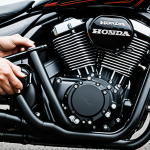Key Safety Considerations Before Installing Aftermarket Suspension Kits
Choosing an aftermarket suspension kit requires thorough evaluation to ensure vehicle compatibility. Not all kits suit every model; mismatched components can compromise safety and performance. It’s crucial to check specifications carefully against your vehicle’s make and model to avoid unintended consequences such as poor handling or excessive wear.
Sourcing the kit from reputable manufacturers is a key safety factor. Trusted brands adhere to rigorous quality standards, providing reliable components that maintain structural integrity. Kits from dubious suppliers may lack certification or use subpar materials, increasing the risk of failure.
Also to discover : Essential Safety Tips for Elevating Your Driving Experience with a Digital Dashboard Upgrade
Before installation, conduct pre-installation checks focusing on:
- Verifying all parts and hardware are complete and undamaged.
- Inspecting mounting points on the vehicle for rust or deformation.
- Ensuring suspension geometry aligns with the kit’s requirements.
Overlooking these steps can heighten ride quality risks, such as instability, vibrations, or premature component failure. Addressing these factors in advance not only protects the vehicle and passengers but also preserves the suspension’s intended performance benefits. Adhering to these safety considerations sets the foundation for a successful and secure upgrade.
In parallel : Ultimate Guide to Wheel Bearing Maintenance: Protect Your Commercial Truck from Accidents
Best Practices for Installing Aftermarket Suspension Kits
Installing an aftermarket suspension kit demands careful preparation and adherence to precise steps to ensure safety and optimal performance. Begin by organizing all necessary tools and creating a clear, well-lit workspace free of distractions. This preparation reduces the chance of errors during installation.
Following expert installation steps is crucial. Each kit typically comes with detailed installation guidelines; reviewing them thoroughly before starting helps avoid mistakes. Key steps include loosening and removing factory suspension components carefully, installing the new parts with exact torque specifications, and verifying mounting points align correctly. Skipping or rushing these steps can lead to compromised suspension integrity and ride quality risks such as vibrations or uneven handling.
While some enthusiasts consider DIY installation, professional installation offers distinct benefits, including access to specialized equipment and experience with calibration tasks like wheel alignment. Professionals can also identify subtle issues during installation that might be missed otherwise, ensuring the suspension operates safely from day one.
In summary, detailed preparation, strict adherence to installation procedures, and considering expert installation support combine to minimize risks and maximize the effectiveness of your aftermarket suspension kit upgrade.
Common Installation Mistakes and How to Avoid Them
Understanding frequent suspension kit mistakes is vital for maintaining safety and performance. A common error is overtightening bolts, which can strip threads or damage components, weakening suspension integrity. Another typical installation error involves improper alignments; misaligned parts cause uneven tire wear, reduced handling precision, and heightened ride quality risks.
Missing specified torque values during installation leads to both over- and under-tightening, compromising suspension safety. Adhering strictly to torque specs in the installation guidelines is essential to prevent these issues.
Consequences of these mistakes often manifest as suspension noises, vibrations, or instability, directly affecting safe driving. Suspended awareness of potential errors can cause premature wear or failures, increasing the risk of accidents.
Preventative measures include creating comprehensive checklists covering torque settings, alignment verification, and hardware inspection during each installation step. Using calibrated torque wrenches and confirming geometry alignment minimizes risks.
Thoroughly reviewing expert installation steps before starting installation helps recognize these pitfalls early. When in doubt, professional installers can provide valuable insight, ensuring aftermarket suspension kit safety and avoiding costly post-installation repairs.
Post-Installation Safety Checks and Maintenance
After installing an aftermarket suspension kit, post-installation inspection is critical to confirm that all components are securely fitted and functioning as intended. Immediate checks should focus on verifying torque settings of all fasteners, ensuring no bolts are loose or misaligned. This step directly mitigates suspension safety issues such as vibrations or instability that can arise from improper installation.
Routine suspension maintenance involves regular visual inspections for wear, corrosion, or damage to both suspension parts and mounting points. Timely detection helps prevent ride quality risks, such as uneven handling or premature component failure. It’s also important to monitor ride comfort over time, noting any unusual noises or changes in vehicle behavior that could signal the need for adjustments.
Adjustments may include realigning the suspension geometry or retightening hardware after the first few hundred miles of use, as parts settle. For example, slight misalignments can cause early tire wear and reduced stability, so prompt correction is essential.
Safe driving after upgrades depends on consistent post-installation inspection and maintenance routines. If unexpected handling issues or noises persist, seeking professional inspection ensures the aftermarket suspension continues to perform safely and effectively, preserving both vehicle integrity and driver confidence.
Assessing and Addressing Potential Risks with Aftermarket Suspensions
Installing an aftermarket suspension kit introduces several potential risks that must be carefully assessed to maintain vehicle safety. One common issue is alignment problems. Misaligned suspension components cause uneven tire wear and diminish stability, increasing accident risk. Precision in suspension geometry during installation and post-installation adjustments is critical to reduce these aftermarket suspension risks.
Another typical challenge involves ride quality adjustments after the upgrade. Vibrations, unusual noises, or handling changes can signal underlying problems such as loose hardware or incorrect part fitment. Early identification of these symptoms allows timely corrective actions, which may include tightening fasteners or readjusting suspension height.
Premature wear of components is also a notable risk, often linked to improper installation or incompatible parts. This degradation affects overall vehicle control and safety.
Addressing these concerns involves routine monitoring and responsive maintenance. If issues persist despite adjustments, seeking professional inspection is advisable. Experts can perform detailed diagnostics and recalibration, ensuring the aftermarket suspension kit delivers optimal performance without compromising safety. Prioritizing these steps helps safeguard ride quality and vehicle integrity after suspension upgrades.





